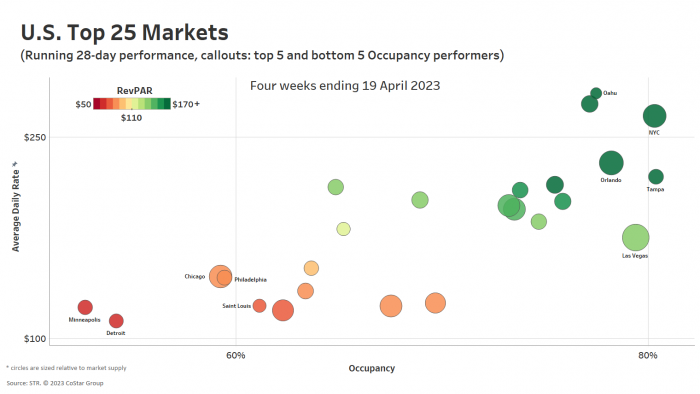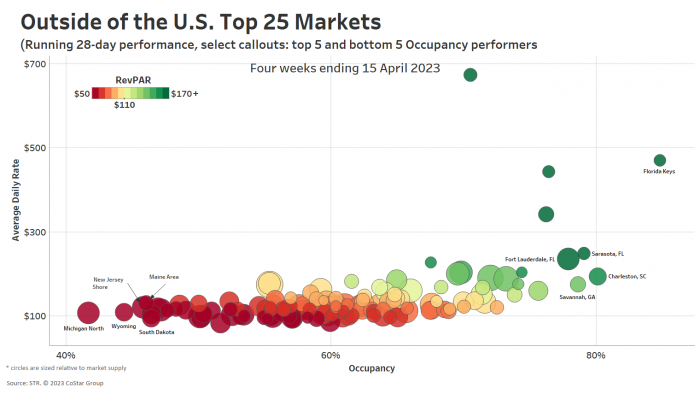The top hotel markets in this STR U.S. bubble chart update show a seasonal momentum shift from traditional winter/spring break hotspots to a broader range of destinations with increasingly travel-friendly climates.
For the four weeks ending 15 April 2023, recovery growth across a range of industry indicators took a small backstep, with occupancy (64.1%) falling 0.7 percentage points (ppts) from the prior month. Recent occupancy indicators were also down year over year (-0.2 ppts) as well as from 2019 (-5.1 ppts). However, these drops are not a serious concern given calendar impacts.
The four-week period included the extended Easter/Passover holiday, which characteristically constrains corporate travel. With that in mind, it is not too surprising that overall U.S. demand and occupancy decreased from our previous monthly update.
As to annual comparisons, it is important to remember that roughly half of the country had already gotten back on track this time last year, particularly those markets that are seasonally strong during spring. The other half of the country, mostly centered in larger cities, was at the verge of a solid Q3 recovery spurt. Matched comparisons against last year are against a peak pandemic leisure travel period. In making long-term performance comparisons to 2019, it is worth adding that this matched period comparison against 2019 does not include the Easter holiday in 2019—that occurred in later in April.
Time comparisons aside, the industry continues to evolve, and this adds nuance in benchmarking markets’ hotel performance. Leisure travel, which had been king during the COVID era, remains strong during the current phase of the recovery. Compared to last year, however, pent-up demand and excess savings have fallen. Likewise, inflation, relatively flat wage growth along with labor costs have also led to some belt-tightening across personal and business travelers alike. As a result, weekend along with leisure travel have decreased from pandemic peaks toward more usual levels.
Contrasting to the business side, workers are increasingly back in the office with cities benefiting from an improving mix of corporate travel along with gains in convention and group bookings. Travel is returning to cities and moving to normal levels from “diversion destinations.”
In this phase of the recovery, the top performing markets (at least so far into 2023) continue to offer warmer climates and either directly cater to leisure travelers or provide a complimentary mix of leisure-friendly amenities.

